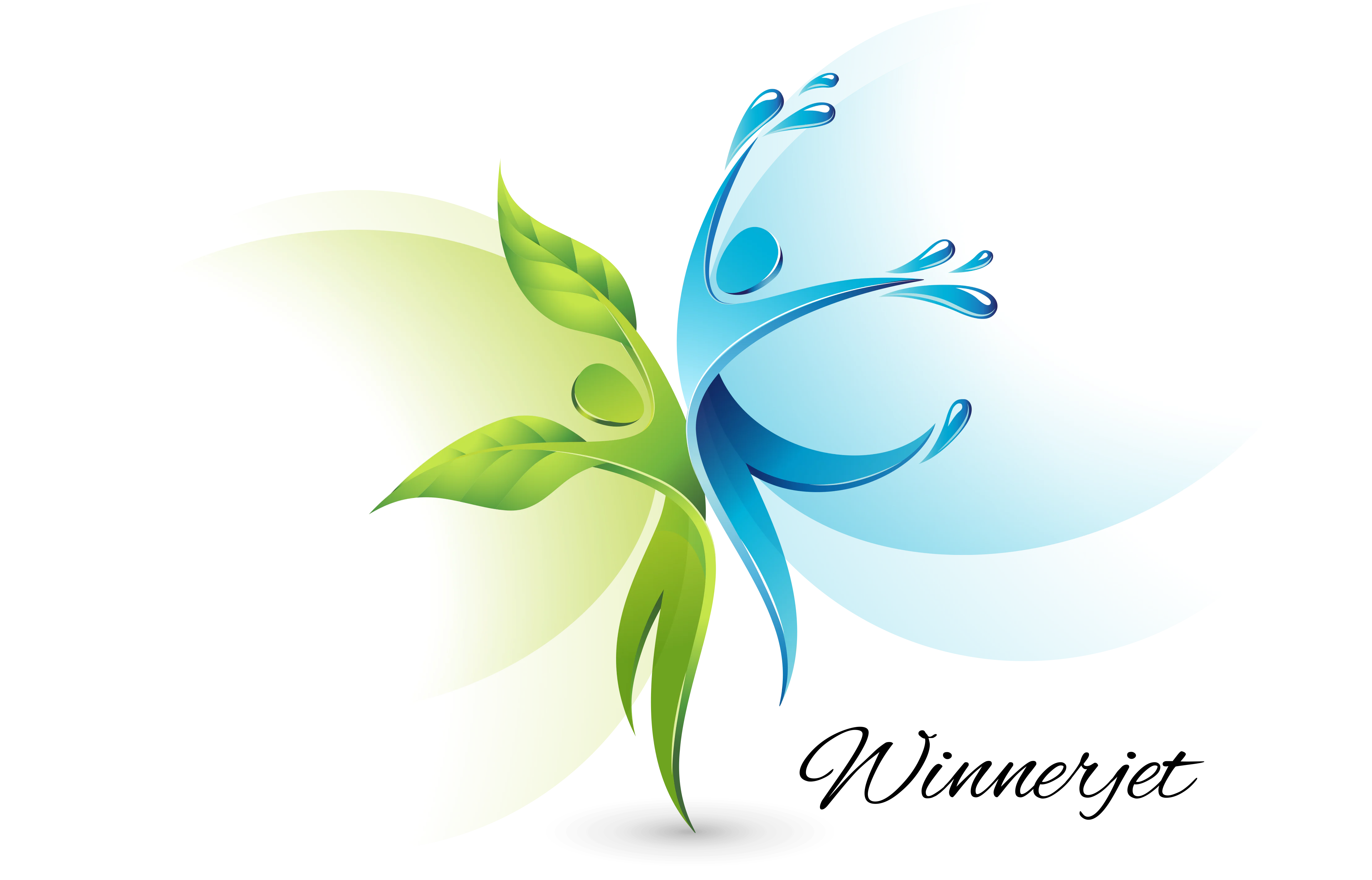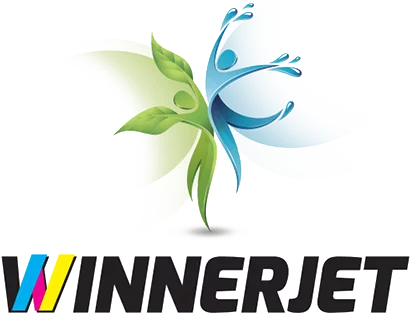As a popular printing method, DTF or direct-to-film transfers are valuable for many purposes and help create custom designs on fabric. It involves printing designs onto special films, which are then transferred to fabrics via heat press technology.
Selecting the right printer for DTF transfers is crucial. It affects your print quality and operational efficiency significantly, determining your overall costs in the long run.
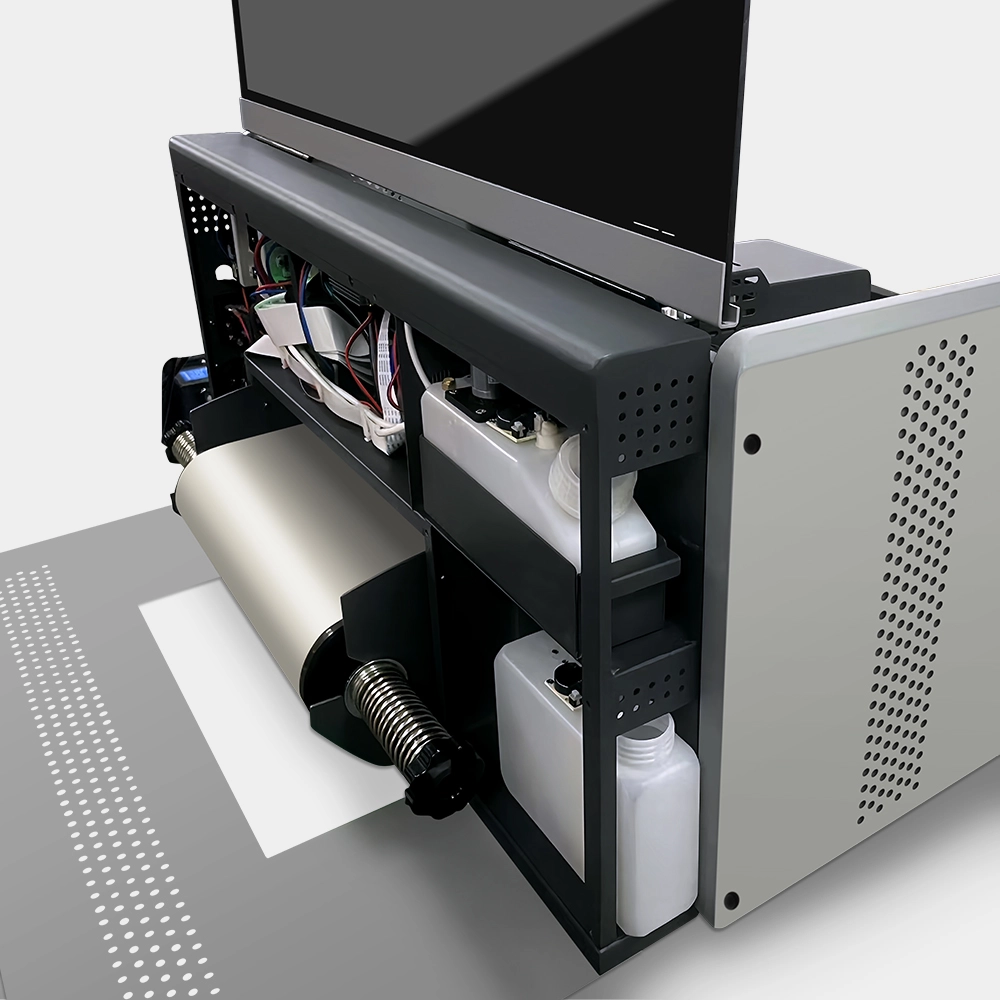
What Makes a DTF Printer Different from Other Printing Technologies?
A printer for DTF transfers is specifically designed for film transfer printing and uses special inks that adhere to PET films. These inks contain white pigment layers crucial for transfer quality.
Compared to other printing technologies, the DTF printer shows a significant difference: regular inkjet printers lack the heat press function, and DTG printers print directly onto fabrics. Sublimation printers work with Polyester and polymer-coated materials. The printer for DTF transfers, however, can print designs that transfer to almost any fabric type.
Here’s how different printing technologies compare:
| Feature | DTF Printer | Regular Inkjet | DTG Printer | Sublimation Printer |
| Printing Surface | PET Film | Paper | Direct to fabric | Special transfer paper |
| Ink Type | DTF inks with white | Dye or pigment | Textile inks | Sublimation dyes |
| Material Compatibility | Most fabrics | Limited to paper | Natural fibers and blends | Polyester and coated items |
| Durability | High | Low | Medium to high when properly pretreated | High on compatible materials |
Key Features You Shouldn’t Overlook When Buying a DTF Printer
When shopping for a printer for DTF transfers, several critical features determine performance. The key considerations include:
Print Quality
Resolution (DPI) is crucial in DTF printing and affects the quality of finished products. Look for printers with high DPI capability. Higher-resolution printers mean sharper details and produce more vibrant colors.
Also, a good printer for DTF transfers should have stable white ink coverage, which is important in ensuring pattern opacity and color accuracy.
Speed
Production speed directly affects your business output. Entry-level DTF printers might handle 5-10 transfers per hour. Commercial models can produce 25+ transfers hourly. Consider your production needs carefully.
Ease of Maintenance
The printer for DTF transfers requires regular maintenance to function properly. Look for models with automated cleaning cycles. These save time and reduce manual work. Accessible print heads make cleaning easier. Choose a printer with built-in humidity control, as it reduces nozzle clogging issues.
Compatibility
Software compatibility is often overlooked but extremely important. Your printer for DTF transfers should work with your design software. Check if RIP software is included, which translates your designs into printer instructions. Consider the film sizes the printer can handle and ensure connection options should match your workflow needs.
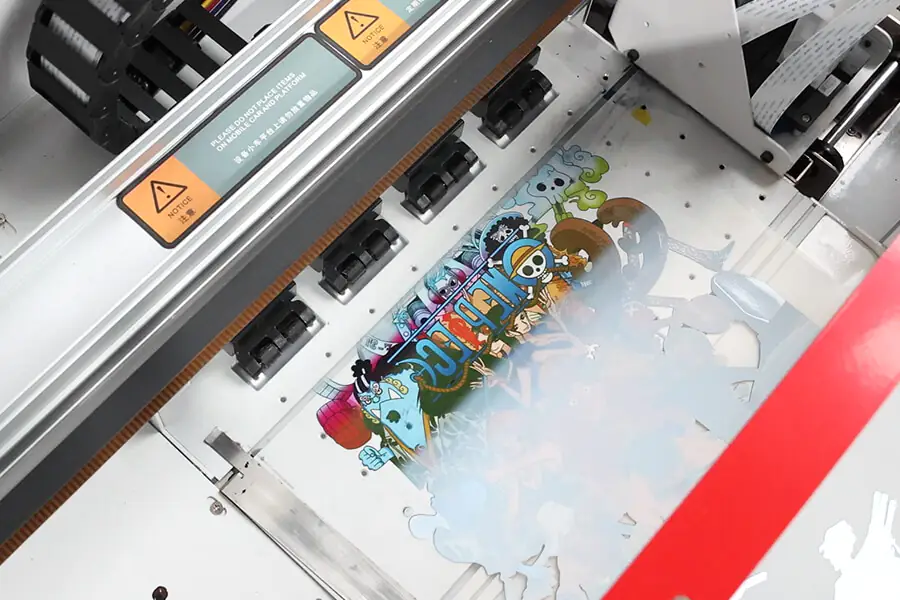
What Are the Hidden Costs of Using DTF Printers?
The initial printer purchase is just the beginning of your investment. DTF printing comes with ongoing expenses. Specialized inks cost more than regular printer inks and white ink consumption is particularly high in DTF printing. PET films and hot melt powder are regular consumables, while maintenance supplies like cleaning solutions add to expenses.
When comparing DTF printer machine options, look beyond the purchase price. A cheaper printer for DTF transfers might cost more long-term. Calculate your per-print cost, including all consumables. Consider ink efficiency ratings carefully. Quality machines require less frequent parts replacement. It’s recommended to factor in warranty coverage and support costs, too.
How to Get the Most Out of Your DTF Printer
Maximizing your DTF printer’s potential requires proper techniques. Follow these guidelines:
- Maintain optimal humidity levels in your printing area (range: 40-60%).
- Ensure ideal temperature (range: 20-25°C).
- Store films properly to prevent dust accumulation.
- Clean print heads regularly according to manufacturer guidelines.
- Use color profiles designed specifically for your printer model.
- Calibrate your printer for DTF transfers regularly for consistent color output.
- Adjust your white ink density based on the transfer substrate.
- Keep firmware and software updated for best performance.
Proper maintenance and efficient use extend your printer’s lifespan substantially. It’s recommended to clean your printer after each use. This prevents ink buildup. Follow regular service schedules to catch potential issues early. Also, keep spare parts handy for quick replacements to reduce downtime. Preventive maintenance always costs less than emergency repairs.
Winnerjet: Reliable Partner for DTF Printers
At Winnerjet, we have been supporting printing businesses since 2008. We understand the challenges of DTF printing and provide dependable solutions to efficiently navigate them.
The Winnerjet A2 60CM DTF Printer With i3200 Printhead & Powder Shaker is our popular mode in the printer for DTF transfers category. It’s a complete solution that efficiently handles professional DTF transfer production. This best printer for DTF transfers combines reliable hardware with advanced features. These include (but are not limited to):
- Multiple Print Head Configuration: Available with 2/4/8 Epson i3200 print heads for scalable production speeds.
- Large Print Area: 60CM (24”) print width accommodates various transfer sizes.
- Advanced Nozzle Protection: The built-in humidification system prevents clogging during idle periods.
- Intelligent Curing System: Automatically adjusts temperature for optimal powder adhesion.
- Ink Recycling Technology: The continuous supply system reduces waste and prevents ink settlement.
- Automated Powder Application: Integrated shaker system ensures even powder coverage with recycling capability.
- User-Friendly Interface: Simple controls make operation accessible to both beginners and experienced operators.
Discover the perfect DTF printing solution for your needs. Whether you’re a small business or a high-volume producer, our range of DTF printers and premium consumables ensures top-quality results at competitive prices. Ready to elevate your prints? Contact us today for expert guidance and personalized recommendations!
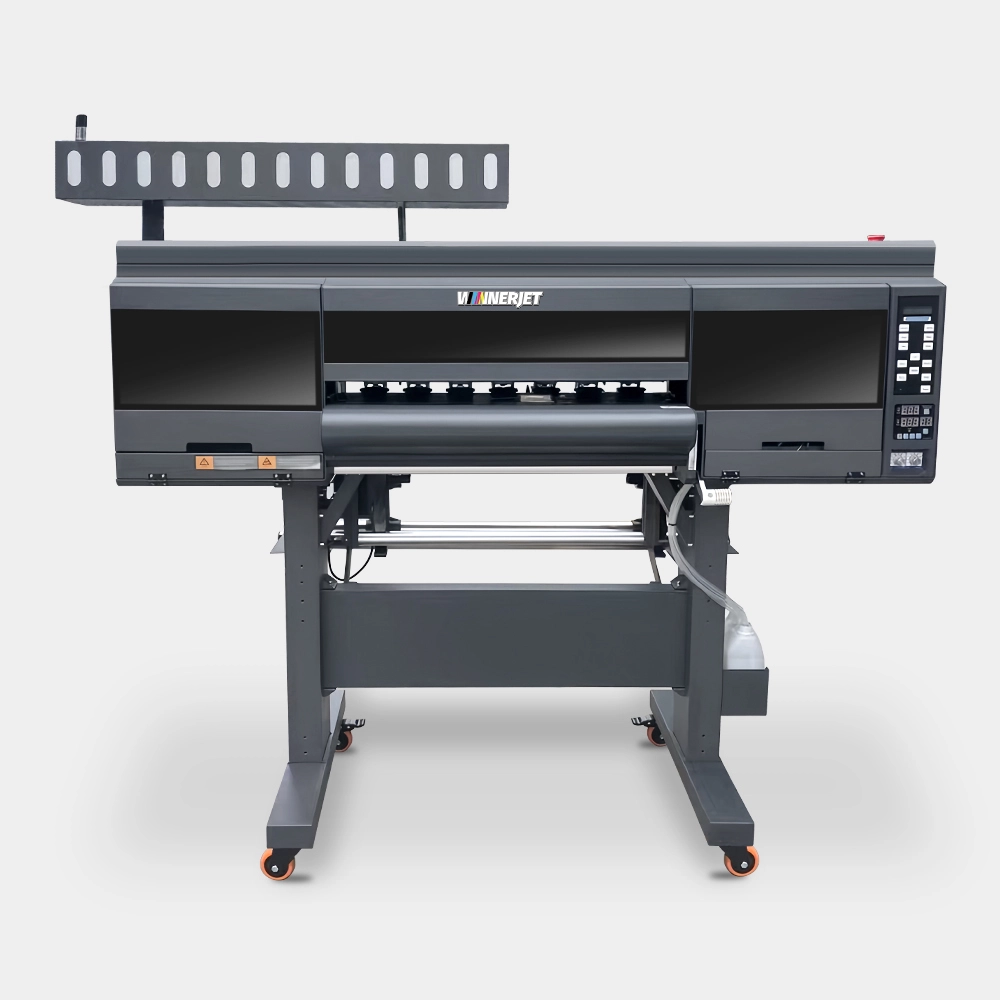
FAQ
What Does DTF Transfer Mean?
DTF stands for Direct to Film. This printing process involves printing a design onto a PET film, dusting it with a hot-melt adhesive powder, curing it with heat, and then transferring the design onto the fabric using a heat press. The heat and pressure cause the design to adhere firmly to the fabric, ensuring high durability and excellent color performance.
Can I Use a Regular Printer for DTF Transfers?
Standard inkjet or laser printers cannot produce DTF transfers. DTF requires special ink formulations. It needs white ink capability and requires precise ink layering. Regular printers lack these features. They cannot print on PET films properly. What kind of printer do I need for DTF transfers? Choose one that has these specific features.
How Long Do DTF Prints Last?
DTF prints offer excellent durability when properly applied. They typically withstand 50+ wash cycles without significant fading. The transfers remain flexible on the fabric. Colors stay vibrant longer than many other transfer methods. Proper care extends their lifespan further.
Does DTF Crack or Peel?
High-quality DTF transfers are less prone to cracking or peeling because they rely on the hot-melt adhesive layer to form a flexible and strong bond with the fabric. This allows the material to stretch without damaging the design.
